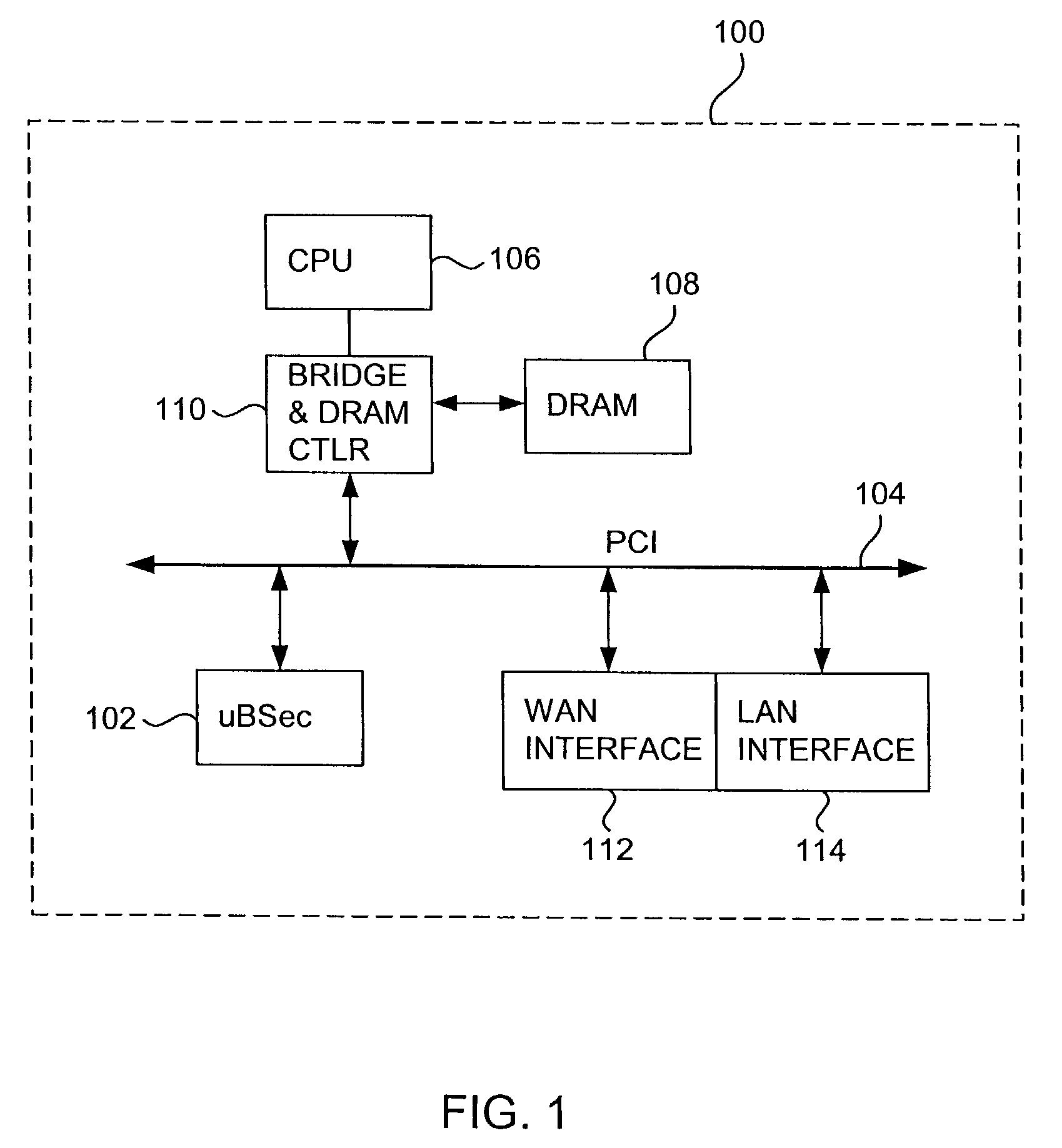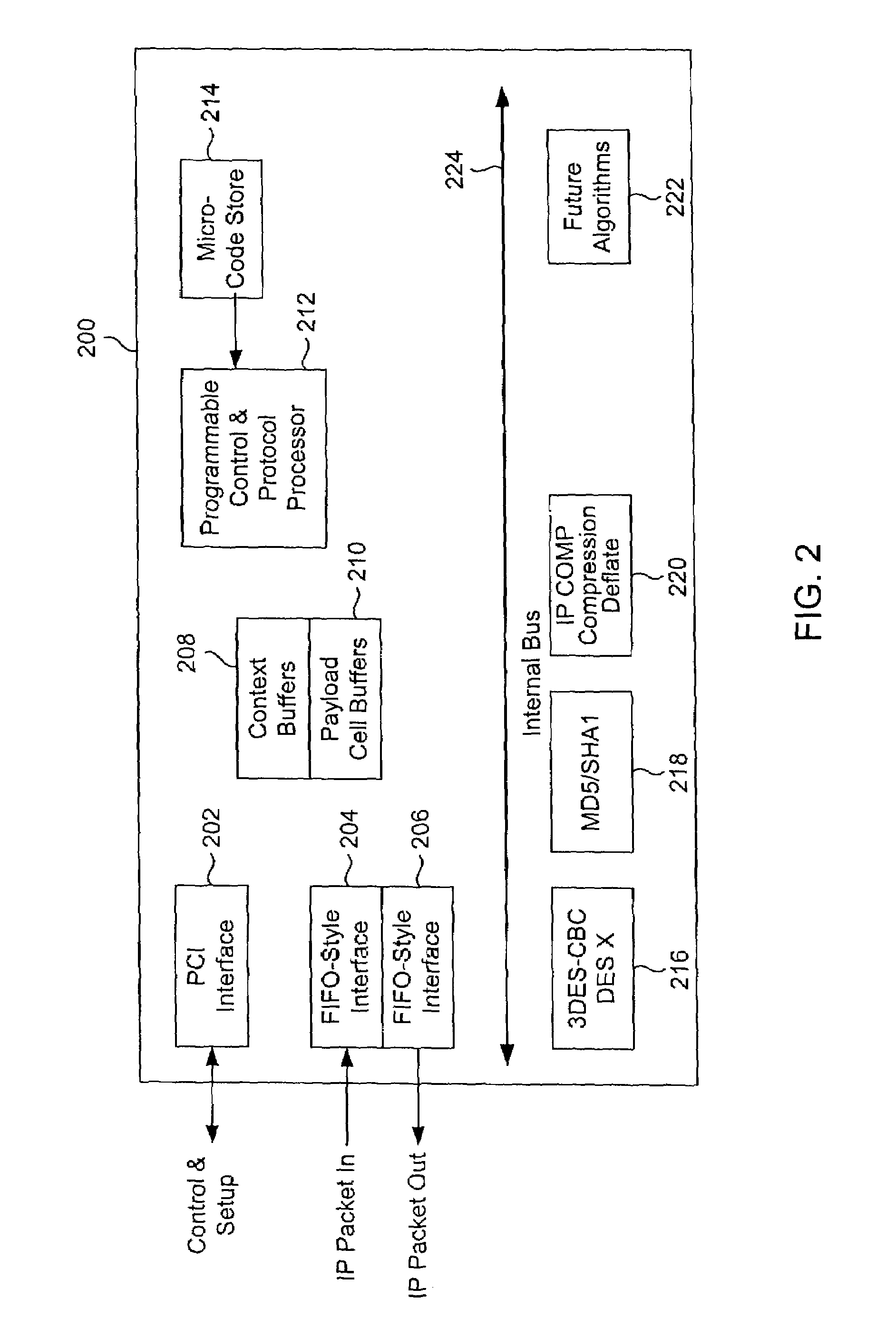Security chip architecture and implementations for cryptography acceleration
a security chip and acceleration technology, applied in the field of cryptography, can solve the problems of inability to meet the needs of large external attached memory in order to operate, most expensive type of memory, and inability to meet the requirements of large external attached memory for many applications, and achieve the effect of significant performance improvemen
- Summary
- Abstract
- Description
- Claims
- Application Information
AI Technical Summary
Benefits of technology
Problems solved by technology
Method used
Image
Examples
first embodiment
[0036]the present invention is shown in more detail in FIG. 4. An IPSec cryptography accelerator chip 400 constructed according to the present invention reads and writes data to the system via a PCI interface 402. Each incoming packet is sub-divided into fixed-size cells by a data align barrel shifter 404, wherein each cell in this implementation is 64 bytes. The data align barrel shifter 404 serves as a packet splitting unit to divide the incoming packets into fixed-sized cells. The input packets may also be scattered all over memory (i.e. fragmentation), and the data align barrel shifter unit 404 reassembles those pieces and produces as output fixed size 64 byte cells.
[0037]The size of each cell may be larger or smaller, depending on the cost and performance requirements for a given implementation. Also, other techniques may be used to sub-divide the incoming packets, as are well known in the art, without departing from the scope of the present invention. The choice of 64-byte fix...
second embodiment
[0044]the present invention is illustrated in FIG. 5. This embodiment is similar to the embodiment of FIG. 4, except that it also includes a DH(Diffie-Hellman) / RSA / DSA unit 506, and a random number generator unit 508 to facilitate the public key processing. With an internal clock of 75 MHz, the engine throughput in this embodiment is over 400 Mb / s, with 3DES encryption and MD5 / SHA1 authentication enabled. In this embodiment the PCI bus is a 64-bit bus operating at up to 66 MHz. Note that the speed of the PCI bus clock (33 MHz vs. 66 MHz) and the bus latency have very little effect on the performance of the present invention, since the accelerator chips aggressively pre-fetch and write back descriptors, command buffers, context parameters and packet data. This enables the accelerator chips to run the crypto and authentication engines at full potential despite other system latencies.
[0045]The key setup execution unit 506 accelerates the public key operations and the random number gene...
PUM
 Login to View More
Login to View More Abstract
Description
Claims
Application Information
 Login to View More
Login to View More - R&D
- Intellectual Property
- Life Sciences
- Materials
- Tech Scout
- Unparalleled Data Quality
- Higher Quality Content
- 60% Fewer Hallucinations
Browse by: Latest US Patents, China's latest patents, Technical Efficacy Thesaurus, Application Domain, Technology Topic, Popular Technical Reports.
© 2025 PatSnap. All rights reserved.Legal|Privacy policy|Modern Slavery Act Transparency Statement|Sitemap|About US| Contact US: help@patsnap.com



